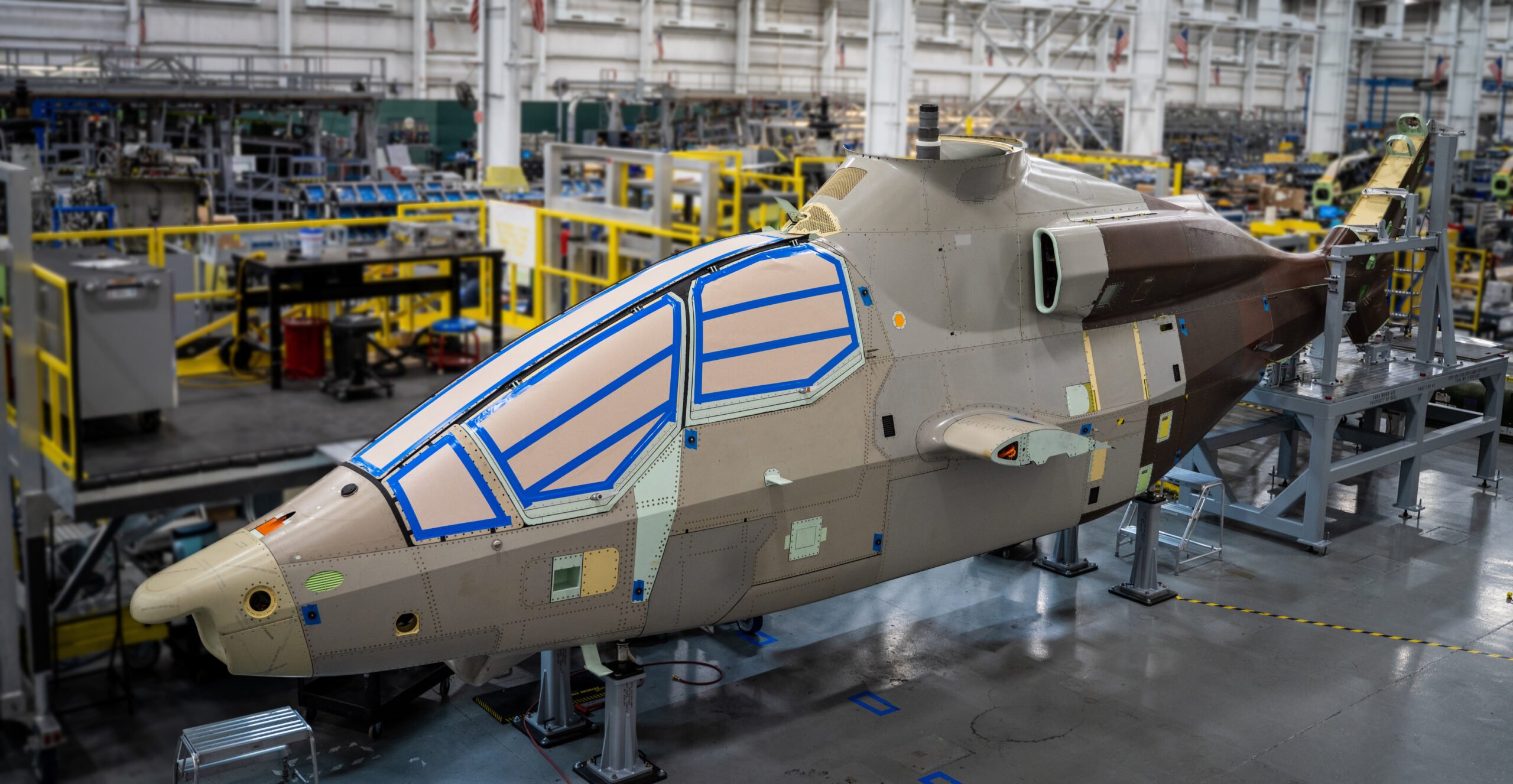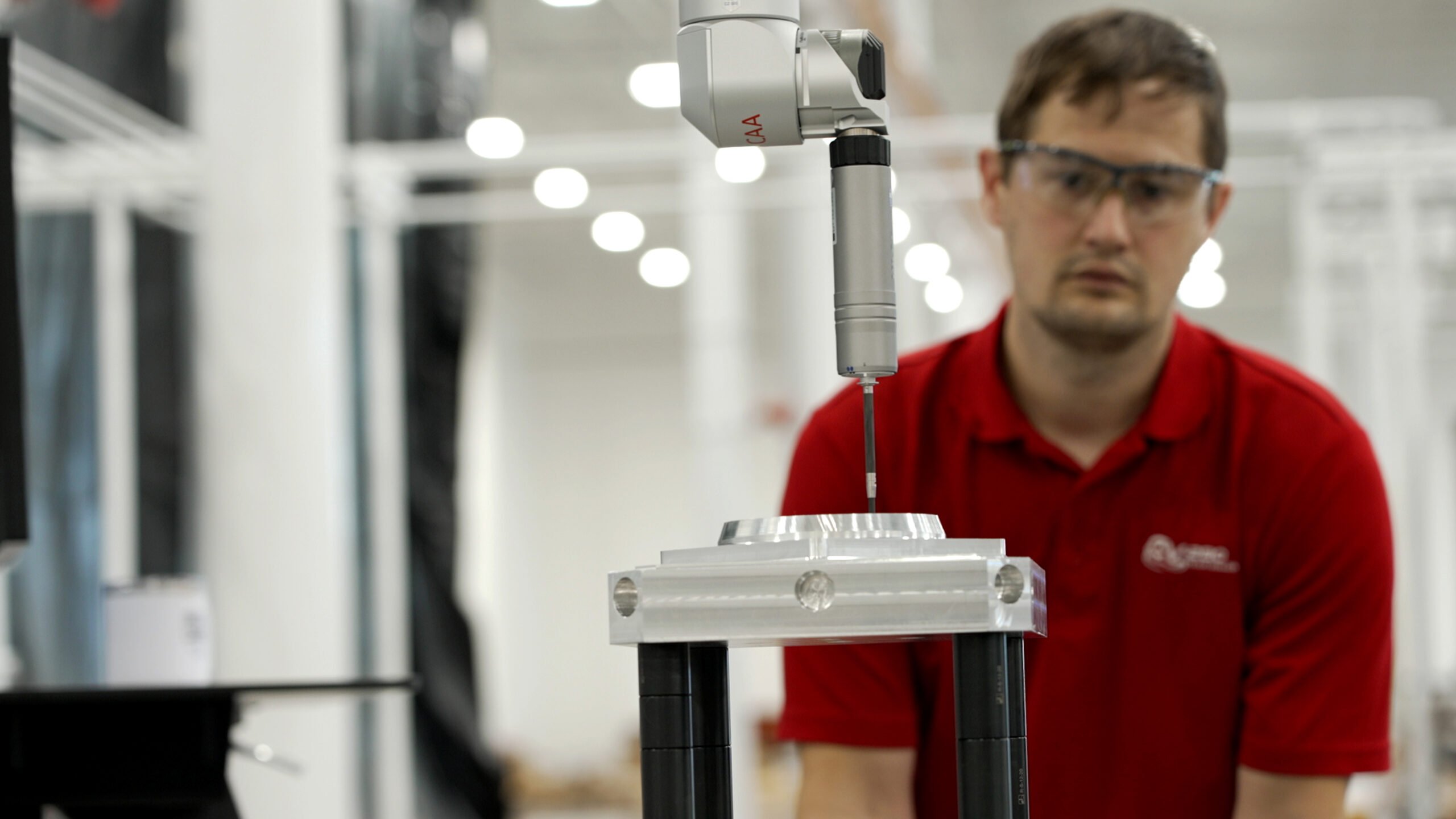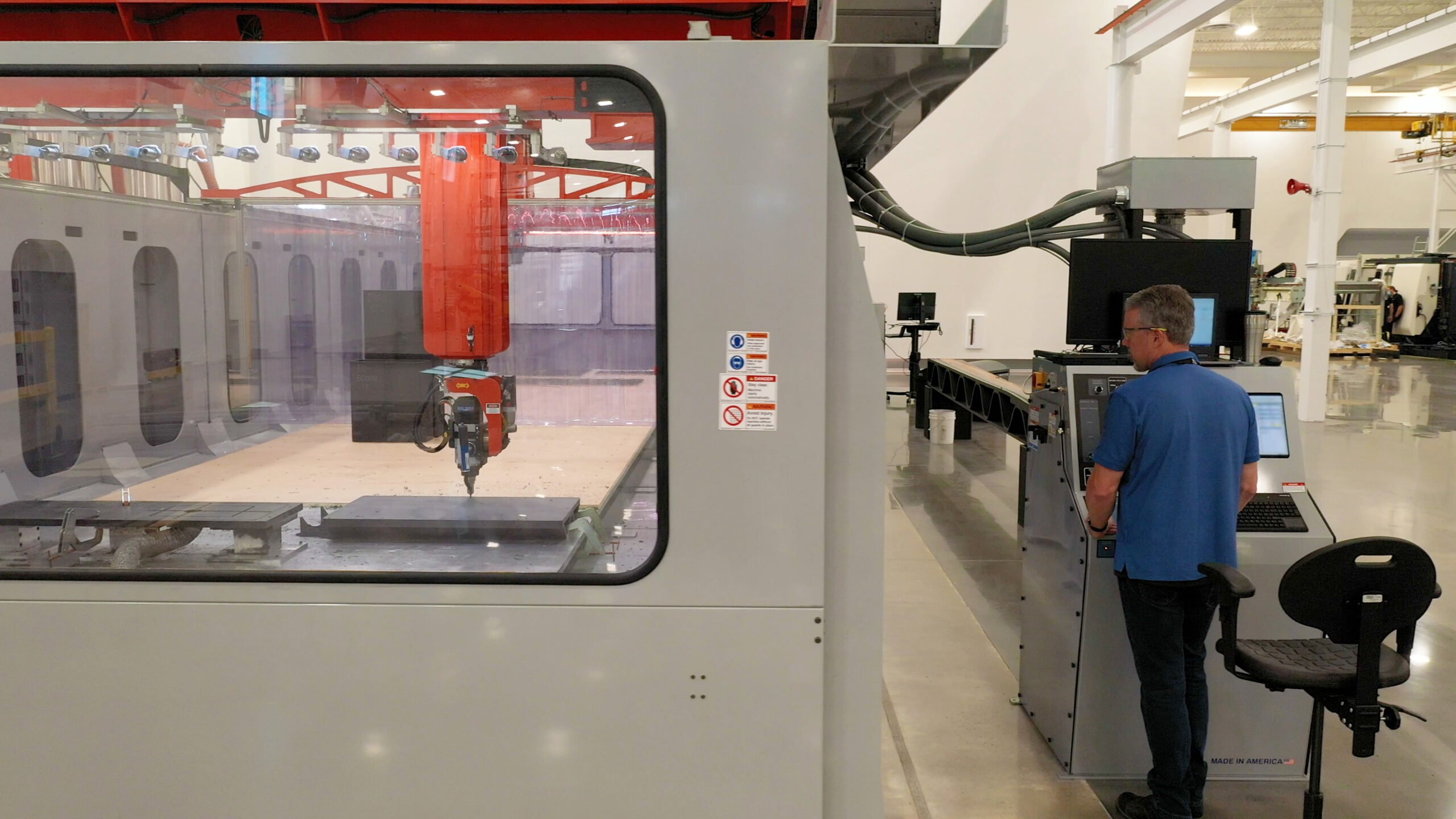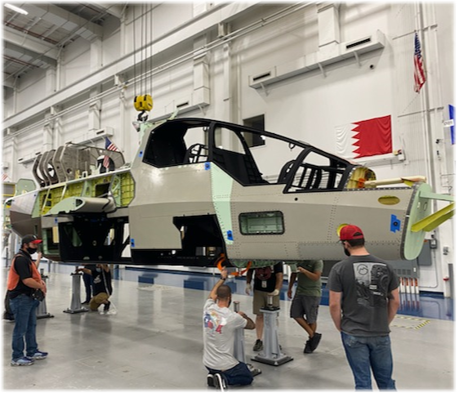
The Bell 360 Invictus sits at the company’s assembly center in Amarillo, Texas. (Courtesy of Bell)
AMARILLO and FORT WORTH, TEXAS: In the shadows of a major highway interchange a few miles from downtown Fort Worth, Bell Textron is developing its factory of the future, experimenting with bleeding-edge manufacturing technologies that the company hopes could drastically improve the company’s assembly processes for the Army’s next generation of assault and recon helicopters — if it wins those highly sought-after contracts.
The 140,000-square-foot facility, dubbed the Manufacturing Technology Center, is already filled with the whirring of machines grinding out helicopter parts and the incessant beeping of construction equipment preparing space for more gear. The end goal is to reduce the time it takes to manufacture helicopter parts using a smaller series of digitally connected machines from initial fabrication through quality assurance.
“We’re really determining everything that’s going to be in your future factory,” said Keith Flail, executive vice president of advanced vertical lift systems at Bell. “You lock down the process and lock down the recipe, lock down the machines that you need. And then you can port that at rate to a future factory here.”
It’s all part of the company’s plan to have its manufacturing processes in prime position if it wins the Army’s Future Long-Range Assault Aircraft (FLRAA) contract this summer, in which it’s competing against a team from Sikorsky-Boeing. Bell is also competing against Sikorsky for the Future Attack Reconnaissance Aircraft (FARA), the service’s future scout helicopter, which won’t be awarded until next year.
Breaking Defense recently toured both the future factory in Fort Worth and Bell’s current assembly center in Amarillo, where company officials said their facilities — both old and new — will play a crucial role in building the Army’s future fleet should Bell come out on top.
RELATED: The distant objective: Focusing FLRAA where it matters
At the MTC, reporters watched new machines mold critical parts such as rotors, gears and masts. If the company wins the FLRAA contract with its tilt-rotor design, the MTC will make the helo’s parts for the engineering and manufacturing design phase while also experimenting with faster production processes.

Precision validation at Bell’s Manufacturing Technology Center in Fort Worth, Texas. (Courtesy of Bell)
“The goal of this place is really develop a recipe for the parts of the every specific, down to the detail, process step [of] how do we work,” Glenn Isbell, vice president of rapid prototyping & manufacturing innovation, told reporters.
The facility includes automated quality assurance machines that measure the circular-ness of a circle or measure gear teeth down to the 50 millionths of an inch — 50 times smaller than a human hair, a Bell engineer told reporters. If the assurance machine finds something wrong with the gear, it can automatically transmit that information to the gear-grinder across the facility.
According to a slide from the company, the new strategies with which Bell is experimenting at the facility reduce the manufacturing process for gear-making from 58 steps and 286 hours, not including travel time between facilities, down to 14 steps and 167 hours.
“The cycle time is orders of magnitude faster,” Isbell said.
Bell doesn’t know just yet how many more FLRAA and FARA aircraft its new processes will get off the production line compared to its current processes, except that it’s expected to be a lot. Isbell said it largely depends on the variants and final design.
“We’re in the process of running all that math now,” Isbell said. “But it is significant.”
The company so far has invested $50 million in a research and development facility that is looking to cut production timelines down significantly. Bell has another $50 million investment planned, Flail said.
While its customers at the Pentagon work to connect sensors and shooters, new state-of-the-art manufacturing machine passes data on helicopter parts as it works to mature and refine manufacturing processes.
The facility also includes a massive 3D printer that is building tooling, essentially the molds, for helicopter parts. The 3D printer is 40 feet long, 10 feet wide and can produce tools up to five feet tall. A Bell employee at the facility said that the printer right now was being used to test feasibility of printed tooling for both the EMD phase and Low-Rate Initial Production for FLRAA.

MTC’s large 3D printer for part tooling. (Courtesy of Bell)
“It helps our design guys to be able to just increase the iterations of how we’re going to do it,” Isbell said.
Bell wants to get ahead of winning the contract, or contracts, and have its processes locked in before it is asked to manufacture parts for the aircraft if the company is chosen. It’s important to be one step ahead, Bell officials told reporters, because making parts can take countless months and one mishap can lead to a multi-month delay.
Amarillo: The FARA Protoype’s Home
More than 300 miles northwest of Fort Worth, tucked inside the chaos of a 1.5 million-square-foot assembly facility is Bell Textron’s competitive prototype for the Army’s Future Attack Reconnaissance Aircraft, known as the 360 Invictus.
The Invictus has just returned from three weeks in the facility’s “red iron,” a Medieval system of, literally, red iron testing that’s designed to stress the frame with representative flight loads.
Bell Textron’s Amarillo Assembly Center is the company’s assembly and final check-out facility for its current fleet of aircraft, as well as where the company expects to do much of the assembly for the FLRAA and FARA if the company wins those contracts as well — at which point the company said they would expand the facility. (Bell provided travel for Breaking Defense, along with other outlets, between the company’s Fort Worth and Amarillo facilities.)
While Bell has a finished prototype for the earlier FLRAA competition, the company’s FARA prototype is more than 80% complete, according to Chris Gehler, Bell’s VP and program director for the FARA program. The company expects the helicopter to be 90% complete by May but will have to pause there as it waits for the development of the Army’s Improved Turbine Engine Program, which will power FARA.

Bell 360 Invictus being assembled in Amarillo, Texas in July 2021.
The delay on the ITEP engine will in turn delay Bell’s flight tests for the helicopter until early 2023. The tests were originally scheduled for this year. However, while the company is waiting for the engine, which just started testing a few weeks ago, the company is planning to do more testing and continue work on its design for Increment One, the first operational version of the helo it would offer the Army.
One area Bell believes it has an advantage over its competitor, Lockheed Martin Sikorsky, is in weight. Bell argues that its rotorcraft is lighter, but as it completes the prototype and plans its increment one version, it’s looking to shed additional weight, specifically in its landing gear. The company says that the more weight it sheds, the more payload the Army can carry.
However, “It won’t look substantially different,” Gehler said.
As FARA moves forward, Bell officials believe they are in a good position ahead of downselect for the engineering and manufacturing development phase next year.
“We are a program that is in good stead,” Gehler said.






















